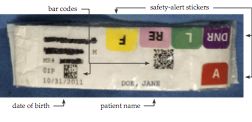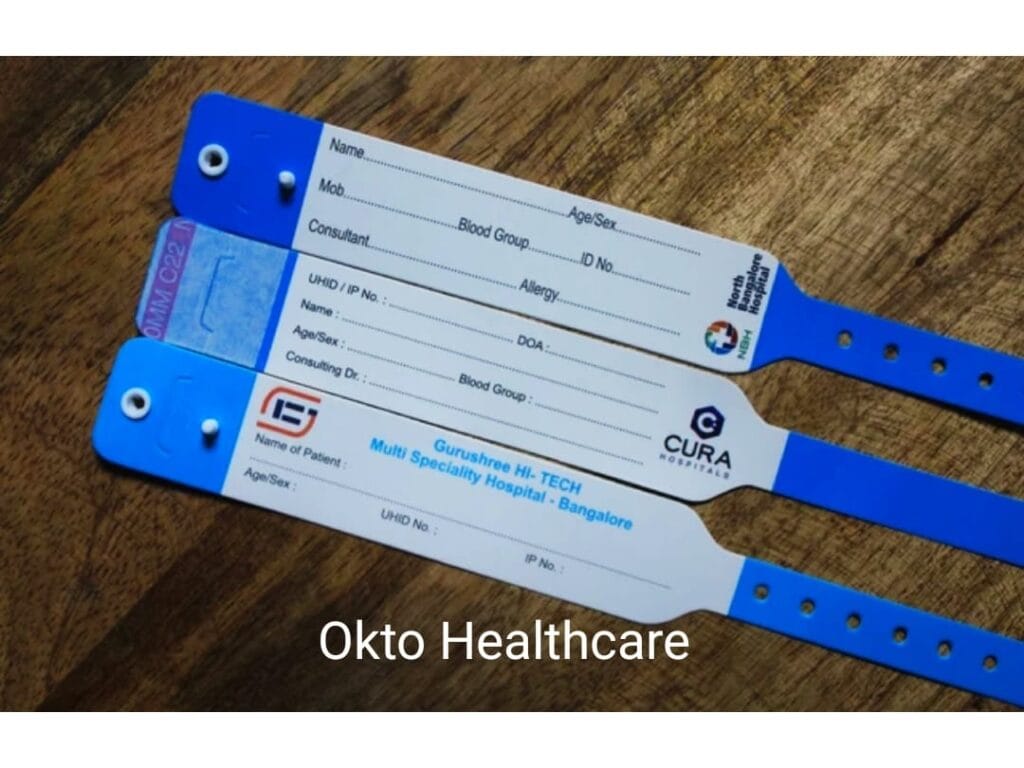How Patient Identification Band Minimizes Threats in Patient Treatment and Care
Wiki Article
Enhancing Safety And Security: The Significance of Person Identification Bands in Healthcare
In the world of healthcare, the effectiveness of patient recognition bands can not be overemphasized, as they act as a basic safeguard against misidentification and succeeding errors. These bands, often neglected, have vital details that is important for making sure patient safety and security and optimal therapy end results. However, the application of efficient recognition protocols presents numerous challenges that health care providers should navigate. As we discover the multifaceted role of these bands, it comes to be apparent that their importance extends beyond simple recognition, elevating inquiries regarding ideal techniques and future innovations in client security.Overview of Person Recognition Bands
Client identification bands play a vital role in ensuring the safety and security and precision of client care in medical care setups. These bands, usually worn on the wrist or ankle, act as an essential device for verifying person identification, consequently reducing the threat of mistakes in treatment, drug administration, and other medical care procedures. Made from sturdy products, patient recognition bands typically include necessary info such as the patient's name, date of birth, medical document number, and barcodes or QR codes for scanning.The implementation of individual identification bands is essential in various medical care atmospheres, consisting of health centers, outpatient facilities, and lasting care establishments. They add to a methodical approach in individual management, allowing medical care professionals to swiftly and accurately determine people, particularly in high-pressure scenarios where swift decision-making is crucial.
Furthermore, using these bands is straightened with regulatory requirements targeted at improving client security - Patient Identification Band. By making certain that each patient's information is easily easily accessible and conveniently proven, medical care companies can preserve a high requirement of care, minimize the incidence of unfavorable events, and promote a culture of safety within healthcare institutions
Benefits of Accurate Identification
Exact recognition is basic to improving individual security and care quality in healthcare setups. It acts as the very first line of defense against mistakes that can cause negative individual results. By guaranteeing that each patient is appropriately recognized with reputable means, such as patient recognition bands, doctor can considerably minimize the threat of misidentification, which can cause unsuitable therapies, medicine errors, and also medical mix-ups.Furthermore, exact individual identification promotes efficient communication amongst health care groups. When all employee can continually determine patients, they can share essential info much more successfully, causing better control of care. This is specifically crucial in emergency circumstances where timely treatments are essential.
In addition, precise identification supports conformity with regulatory criteria, thus lowering the danger of lawful consequences for medical care facilities. It cultivates count on in between individuals and doctor, as individuals feel extra safe recognizing that their identities are being guarded.

Common Challenges Encountered
Making sure reliable individual identification in healthcare setups presents an array of challenges that can endanger security and care high quality. One substantial obstacle is the irregularity in person populaces. Patients might arrive in a state of complication or distress, making accurate recognition challenging. In addition, language barriers can prevent effective interaction, complicating the confirmation process.Another difficulty is the dependence on human consider recognition treatments. Healthcare experts might inadvertently ignore or misunderstand identification procedures, specifically in high-stress atmospheres such as emergency situation divisions. This can lead to errors, consisting of the management of wrong treatments or medicines.
Technical issues also present obstacles. Although digital health record (EHR) systems are created to simplify patient identification, system blackouts or user errors can disrupt the process. Moreover, the physical style of individual ID bands can bring about readability issues, especially in cases where bands are damaged or covered.
Last but not least, irregular training among staff regarding recognition methods can lead to spaces in understanding and practice. Dealing with these challenges is vital for improving client safety and ensuring that recognition bands offer their intended purpose effectively.
Ideal Practices for Execution
To successfully execute patient recognition bands in health care settings, companies should take on a complex strategy that focuses on innovation, standardization, and training integration. Standardization involves developing clear methods for the style, application, and usage of identification bands throughout all departments. This ensures uniformity and minimizes the threat of errors connected to variances in band kinds or labeling techniques.

Training is important for all healthcare team to ensure they understand the importance of exact client identification, just how to correctly read and use identification bands, and the treatments to comply with in case of disparities. Routine workshops and correspondence course can reinforce this expertise and promote a culture of security.
Technology assimilation sites plays a critical duty in improving the performance of individual identification bands. Making use of barcode scanning or RFID technology can simplify the identification procedure, allowing for real-time confirmation of patient identifications. Additionally, electronic wellness record systems must be set up to include informs for mismatches between the recognition band and patient information.
Future Trends in Person Security
As medical care continues to progress, the focus on patient security is most likely to magnify, driven by innovations in technology and a higher understanding of systemic threats. Emerging patterns show a shift towards more incorporated systems that leverage data analytics, fabricated intelligence, and artificial intelligence to enhance individual recognition processes. These innovations can aid recognize potential safety and security concerns before they intensify, consequently lowering errors related to misidentification.Furthermore, the application of blockchain innovation might reinvent exactly how patient information is firmly shared amongst doctor, making certain that recognition bands are continually exact and current. This will certainly not only improve individual security however also help with seamless communication across multidisciplinary groups.

Furthermore, the expanding concentrate on tailored medicine is expected to influence individual safety protocols. By integrating demographic and genetic information into identification systems, health care specialists can customize therapies better, decreasing the threats of adverse reactions due to misidentification.
Final Thought
Finally, individual recognition bands act as an essential part in enhancing safety within healthcare environments. By helping with precise client identification, these bands substantially minimize the threat of mistakes related to misidentification, improper therapies, and medicine administration. In spite of difficulties in implementation, adherence to best practices and the integration of arising modern technologies can better enhance their efficiency. Ultimately, the continued focus on durable identification protocols will certainly add to enhanced website here client results and overall safety and security in medical care settings.In the world of healthcare, the efficiency of individual identification bands can not be overemphasized, as they serve as a basic protect versus misidentification and subsequent mistakes.Client recognition bands play a critical function in making certain the security and precision of individual treatment in health care setups. Made from resilient products, client recognition bands typically consist of important details such as the patient's name, day of birth, medical record number, and barcodes or QR codes for scanning.
By making certain that each client is appropriately identified via reputable methods, such as patient recognition bands, medical care companies can dramatically reduce the threat why not try here of misidentification, which can lead to inappropriate therapies, drug errors, and even surgical mix-ups.
In verdict, patient identification bands serve as an essential component in enhancing security within medical care settings. Patient Identification Band.
Report this wiki page